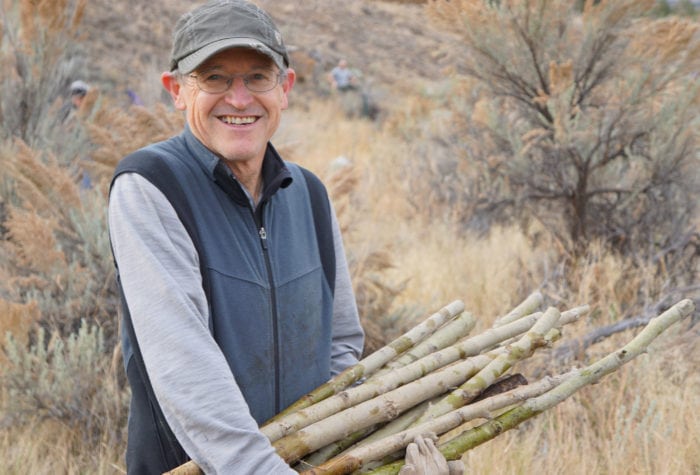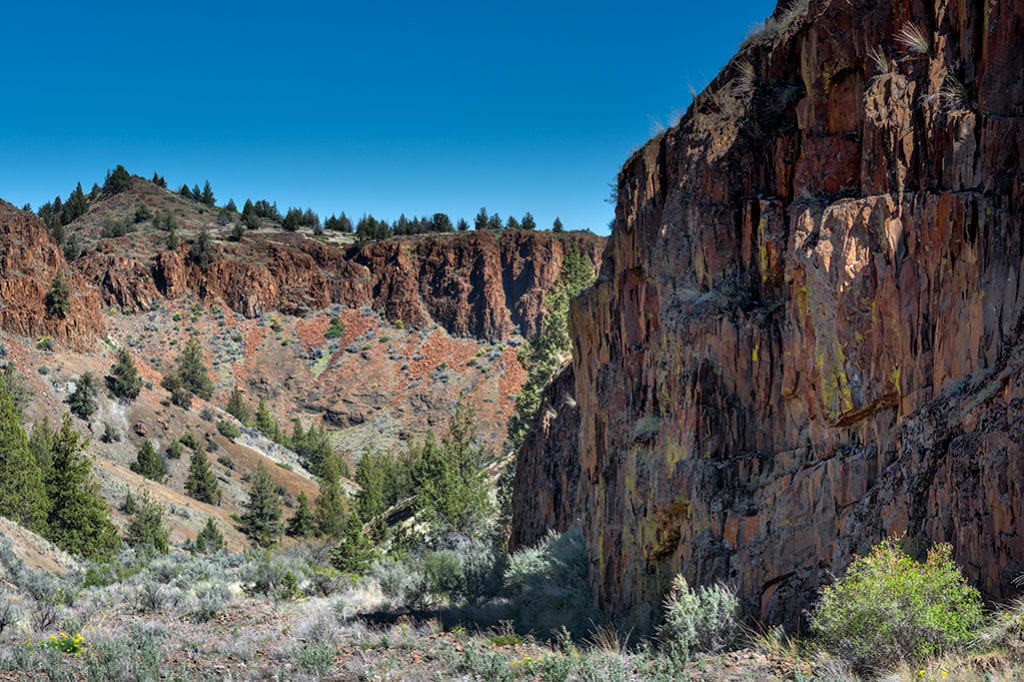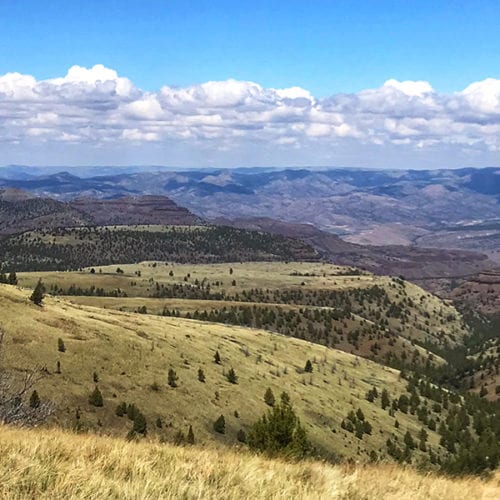What It’s Like to Hike Sutton Mountain
Of course, getting to enjoy those views demands some effort along the Sutton Mountain trail, a 7.5-mile, round-trip trek that gains nearly 1,700 feet in elevation.
The entirety of the trail follows an old roadbed, initially through juniper woodlands and springtime wildflowers—such as purple lupine and red Indian paintbrush—before leaving the shade for good. (As such, this hike is best done in early spring and fall, when daytime temperatures won’t be quite so oppressive. Bring plenty of water, and apply sunscreen before setting out)
Roughly halfway up the mountain, you’ll walk through a cattle gate—be sure to close it behind you—and follow the road as it grows fainter and approaches the summit. A small overlook just below the summit affords wide-open views of the Painted Hills and Ochoco Mountains. But for a full 360º look at the region, a quick backcountry climb to the summit of Sutton Mountain (where no official trail actually leads) affords even grander views of Cascade peaks, from Mt. Jefferson to Mt. Adams. In April, keep an eye out for the rare (and beautiful) pink hedgehog cactus.




